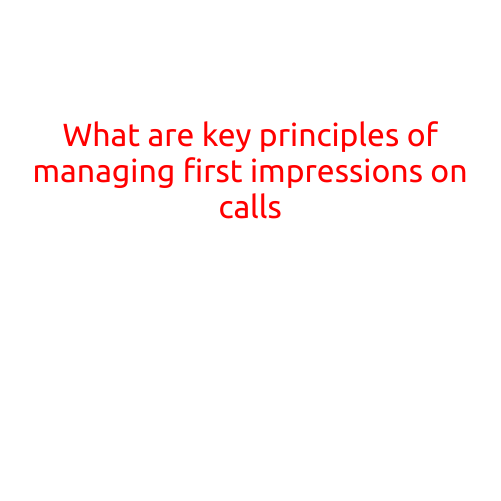
How to Handle Being Persuasive on Phone: Tips and Tricks
With the rise of digital communication, phone calls have become an essential tool for personal and professional interactions. Whether you’re making a sales pitch, negotiating a deal, or simply trying to convince someone to meet up, being able to persuade over the phone is a crucial skill to master. In this article, we’ll delve into the art of being persuasive on phone and provide you with practical tips and tricks to help you get what you want.
Understand Your Audience
Before you pick up the phone, take a moment to think about your audience. Who are you trying to persuade? What are their pain points, goals, and motivations? Understanding your audience’s perspective will help you tailor your message, tone, and delivery to resonate with them better. Research their interests, industry, and concerns, and prepare your arguments accordingly.
Prepare Your Pitch
Once you have a solid understanding of your audience, it’s time to prepare your pitch. Identify your key message and prioritize the most important points you want to convey. Keep your message concise, clear, and free of jargon or technical terminology that might confuse your listener. A well-structured pitch will help you stay focused and ensure you cover all the essential points.
Use Positive Language
When communicating over the phone, tone is everything. Use positive language to build rapport, convey enthusiasm, and create a sense of urgency. Avoid using negative phrases or words that might come across as dismissive or unenthusiastic. For example, instead of saying “I don’t think this will work,” say “I’d like to explore alternative options that might be a better fit for you.”
Demonstrate Empathy
Put yourself in your audience’s shoes and demonstrate empathy by acknowledging their concerns and validating their emotions. This will help build trust and rapport, making them more receptive to your message. For instance, if someone is hesitant about a proposed solution, acknowledge their fear and offer reassurance, saying “I understand your concerns, and I’m happy to address them.”
Be Confident but Respectful
Confidence is key when persuading over the phone, but it’s equally important to be respectful of your audience’s time, opinions, and boundaries. Avoid being pushy, aggressive, or domineering, as this can quickly erode trust and alienate your listener. Instead, remain calm, composed, and professional, and be willing to listen to their objections and concerns.
Use Storytelling
Storytelling is a powerful tool for persuasion, especially when used over the phone. Share relevant anecdotes or examples that illustrate your point, make your message more relatable, and help your audience visualize the benefits. This will make your pitch more engaging, memorable, and effective.
Listen Actively
Persuasion is a two-way conversation, and listening is just as important as talking. Pay attention to your audience’s responses, ask open-ended questions, and acknowledge their opinions. This will show that you value their input, care about their concerns, and are committed to finding a mutually beneficial solution.
Follow Up
After your call, be sure to follow up with your audience to confirm any agreements, provide additional information, or address any outstanding concerns. This will help build trust, demonstrate your commitment, and set the stage for future interactions.
Conclusion
Being persuasive on phone requires a combination of preparation, confidence, empathy, and effective communication. By understanding your audience, preparing your pitch, using positive language, demonstrating empathy, and being confident but respectful, you’ll be well on your way to making a compelling case and getting what you want. Remember to listen actively, use storytelling, and follow up to solidify your message and build strong relationships with your audience. With practice and persistence, you’ll become a master of phone persuasion and achieve your goals with ease.





